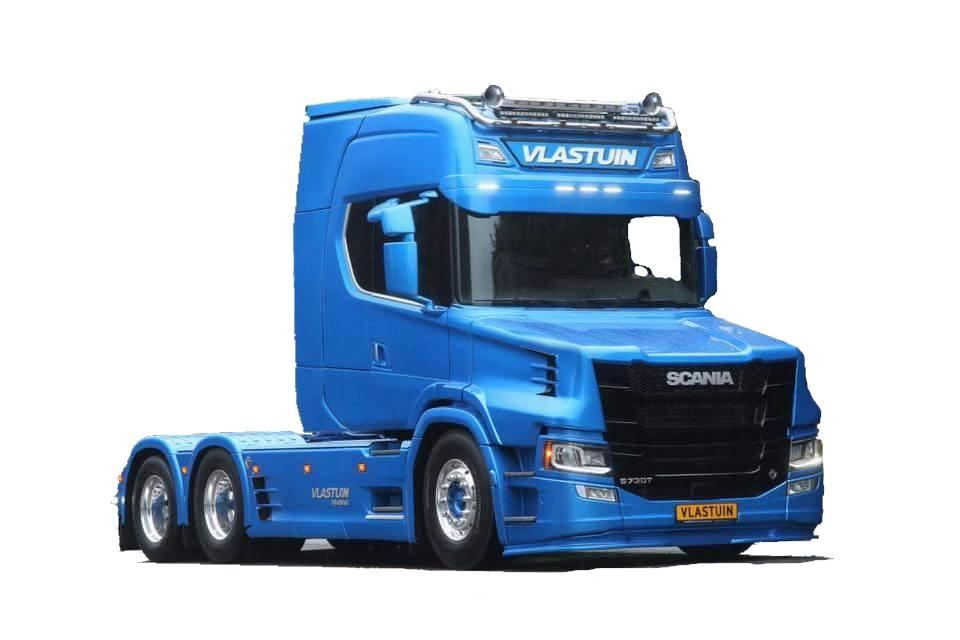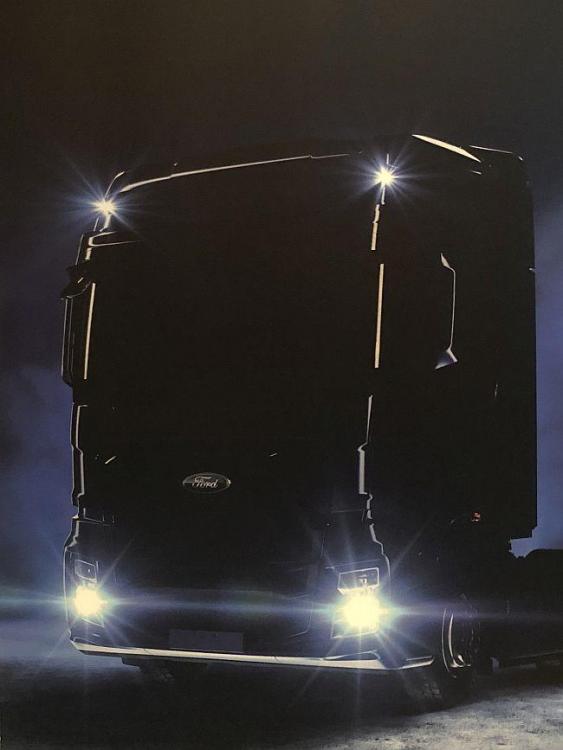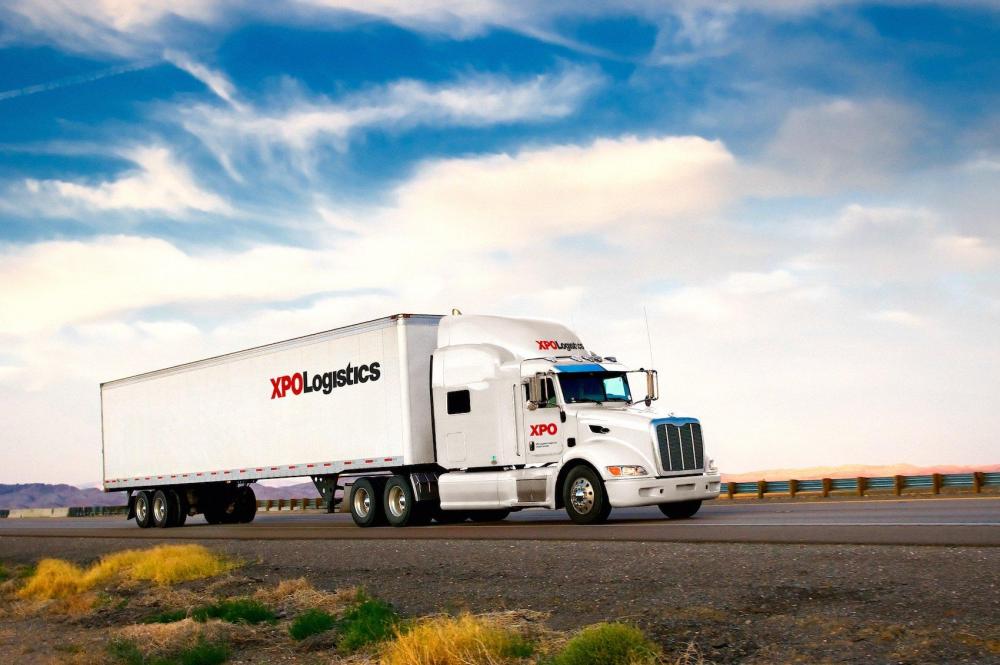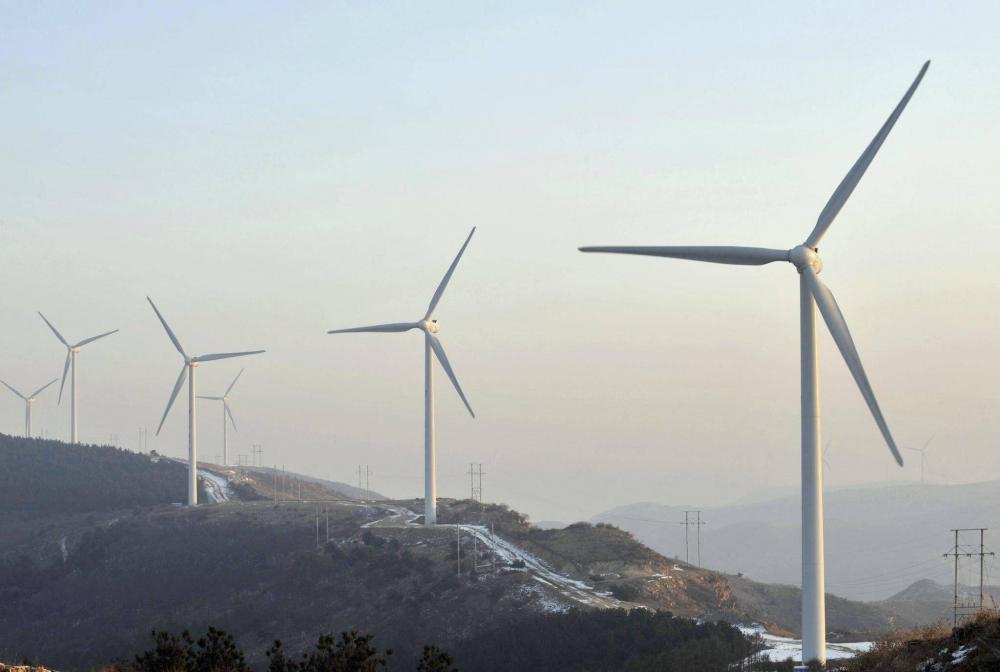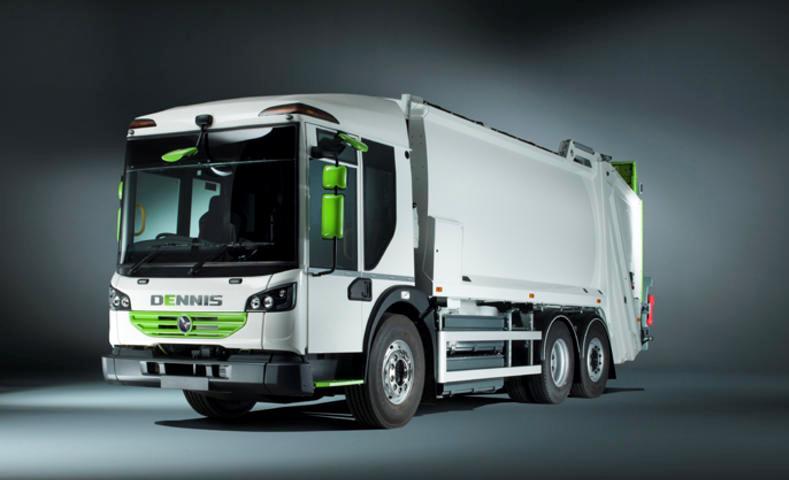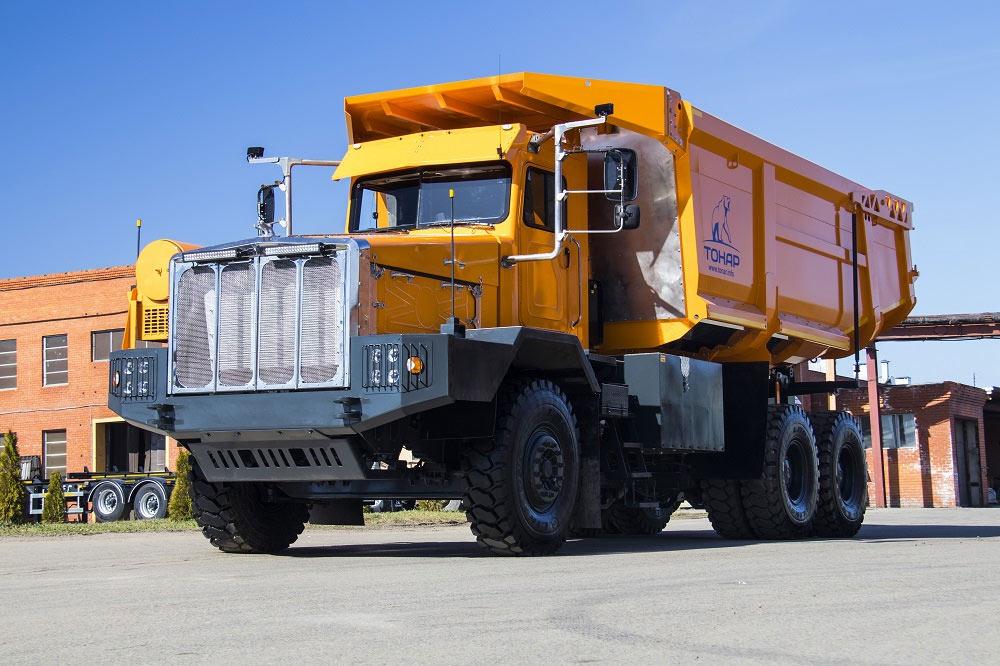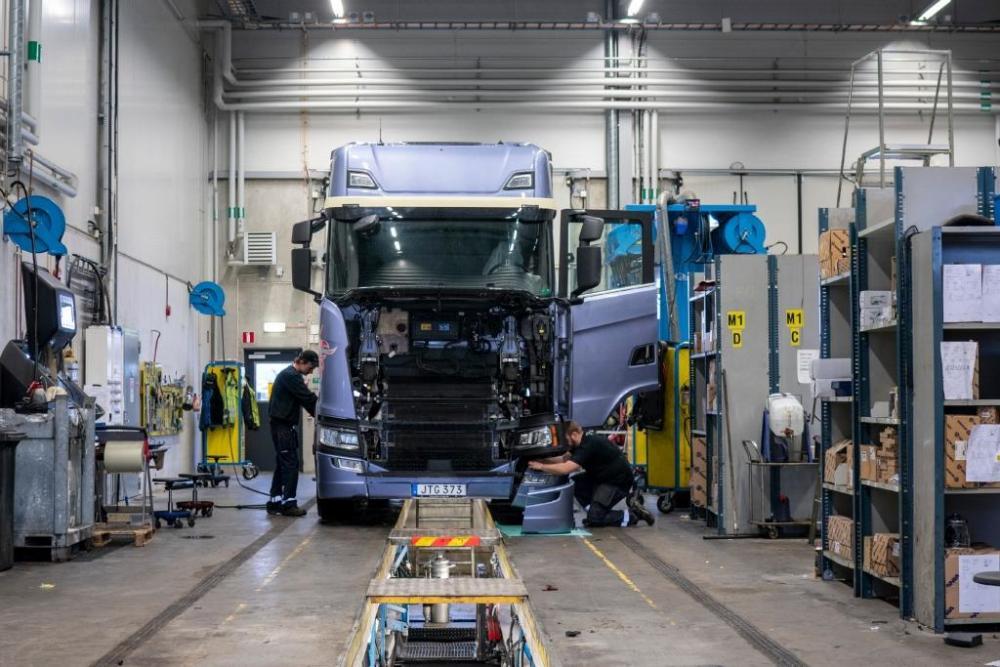
kscarbel2
Moderator-
Posts
18,854 -
Joined
-
Days Won
114
Content Type
Profiles
Forums
Gallery
Events
Blogs
BMT Wiki
Collections
Store
Everything posted by kscarbel2
-
Heavy Duty Trucking (HDT) / June 5, 2018 Navistar International Corp. on June 5 announced it turned around its financial picture during its fiscal second quarter of the year, with net income of $55 million, or 55 cents per share, compared to a second quarter 2017 net loss of $80 million, or 86 cents per share. Revenues for the period ending April 30 increased 16% from a year ago to $2.4 billion, primarily due to higher volumes in the company's Class 6-8 trucks and buses in the U.S. and Canada, according Navistar. Second quarter 2018 EBITDA (earnings before interest, taxes, depreciation and amortization) was $174 million compared to $47 million a year earlier. Second quarter adjusted EBITDA was $182 million, compared to adjusted EBITDA of $65 million a year earlier. "We had a great second quarter, delivering stronger than expected results by taking advantage of the robust market conditions," said Troy A. Clarke, Navistar chairman, president and chief executive officer. Navistar ended second quarter 2018 with $1.14 billion in consolidated cash, cash equivalents, and marketable securities. Manufacturing cash, cash equivalents and marketable securities were $1.1 billion at the end of the quarter. "We are also pleased to report that on a trailing 12-month basis, we were manufacturing free cash flow positive by nearly $100 million," Clarke said. Navistar’s said truck segment net sales increased 22% to $1.7 billion in second quarter 2018 compared to second quarter 2017, due to higher volumes in the company's core markets, higher export truck volumes, an increase in military sales, and a shift in model mix, partially offset by a decline in Mexico truck volumes. The truck segment profit increased to $42 million in second quarter 2018, versus a second quarter 2017 loss of $56 million. The company’s parts segment second quarter 2018 net sales were $601 million, down $9 million compared to second quarter 2017. This was driven by lower U.S. volumes and Blue Diamond Parts sales, partially offset by higher Mexico volumes and parts sales related to the Fleetrite brand, according to Navistar. The parts segment recorded a quarterly profit of $132 million in second quarter 2018, down 14% versus the same period one year ago, primarily due to lower U.S. margins, higher freight-related expenses, and intercompany access fees. Navistar’s global operations segment second quarter 2018 net sales grew 39% to $97 million compared to second quarter 2017. This was primarily driven by higher engine volumes in the company's South America engine operations due to the improving Brazilian economy, according to the company. The global operations segment recorded a $1 million profit in second quarter 2018 compared to a $7 million loss in the same period one year ago. The company’s financial services segment second quarter 2018 net revenues increased 13% to $63 million versus the same period one year ago, primarily driven by higher overall finance receivable balances in the U.S. and Mexico, according to Navistar. Financial Services segment recorded a profit of $19 million in second quarter 2018, an increase of $4 million versus second quarter 2017, primarily due to improved interest margins. Based on what Navistar said are “stronger industry conditions,” the company raised its 2018 full-year guidance: Industry retail deliveries of Class 6-8 trucks and buses in the United States and Canada are forecast to be 380,000 units to 410,000 units, with Class 8 retail deliveries of 250,000 to 280,000 units Navistar revenues are expected to be between $9.75 billion and $10.25 billion The company's adjusted EBITDA is expected to be between $725 million and $775 million Year-end manufacturing cash is expected to be about $1.2 billion "The work we've done in the first half of the year growing Class 8 share, building our backlog and managing costs, combined with strong industry conditions, positions us to deliver an even stronger second half," Clarke said.
-
Air Force One’s new refrigerators will cost US taxpayers $24 million
kscarbel2 replied to kscarbel2's topic in Odds and Ends
The Hill / June 1, 2018 The Air Force is not buying two $24 million refrigerators for Air Force One, the service recently told a congressman. On Monday, Rep. Joe Courtney (D-Conn.) released a letter from Air Force Secretary Heather Wilson saying the Air Force and White House Military Office decided to cancel the purchase out of "prudent fiscal sense." "While the VC-25A chiller replacement requirement still exists, the progress on the VC-25B program weighed against the cost of the chiller effort makes termination the most prudent fiscal sense for the government," Wilson wrote to Courtney in a letter dated May 29. "The Air Force has notified Boeing of the government's intention to cancel the subject contract." Boeing was awarded a $23.7 million contract to replace two of the five refrigerators aboard Air Force One. The refrigerators have been on the plane since it went into service in 1990. The coolers on the presidential aircraft need to have the capacity to store 3,000 meals onboard. Though the refrigerators have unique requirements, the high price tag raised eyebrows, particularly as President Trump has railed against excessive defense contracts. Prior to taking office, Trump slammed the cost of building two new Air Force One planes, tweeting the Pentagon should "cancel order!" The new Air Force One planes are expected to be ready in 2024. In her letter, Wilson said that steps can be taken to ensure "food security" until the new aircraft are ready. "While not optimal, mitigation options exist to ensure food security until new aircraft are delivered," she wrote. Courtney praised the Air Force for canceling the refrigerator contract. "Clearly, the Air Force is making the right decision cancel the previously announced sole-source contract and hit restart on this process," he said in a statement. "Even with the understanding that the Air Force One mission brings with it unique requirements and challenges, a $24 million sole-source contract just didn't pass the smell test." -
No Volvo connection. I'm sure it is Ford proprietary. The cost of designing cabs today has fallen dramatically. Look at the Chinese truckmakers, for example. Most are now using proprietary cab designs (link below). I'm proud of Otosan. They truly have a passion for trucks in their belly. And I'm thrilled to see Bill Ford continue to nurture the Ford-Otosan relationship along. Frankly speaking, the H62X is a big deal, on the same scale as the Transcontinental in 1975. https://product.360che.com/p731/
-
The conventional cab Scania T Series – Past and present
kscarbel2 replied to kscarbel2's topic in Other Truck Makes
Iepieleaks / June 2, 2018 Dutch truck specialist Vlastuin has started the production of the bonneted Scania ‘nextgen’ trucks. At this moment 12 trucks are sold and there are already three of them on the road. Vlastuin is now considering a second version of the new Scania T model. The first one is based on the S- cab with the flat floor. Now there is also a design for the R- model. If you ask us that is a better looking truck than the massive S- model. . -
Ford will officially launch the H62X at the IAA Commercial vehicle show in Hannover, Germany this September. .
-
The Washington Post / June 1, 2018 America has a massive shortage of truck drivers. Joyce Brenny, head of Brenny Transportation in Minnesota, increased driver pay 15 percent this year to try to attract more drivers. Many of her drivers now earn $80,000, she says, yet she still can't find enough people for the job. About 51,000 more drivers are needed to meet the demand from companies such as Amazon and Walmart that are shipping more goods across the country, according to the American Trucking Associations. The driver shortage is already leading to delayed deliveries and higher prices for goods that Americans buy. The ATA predicts that it's likely to get worse in the coming years. Many trucking companies are so desperate for drivers that they are offering signing bonuses and pay raises. So why don't more Americans want this job? We asked truck drivers who have been doing the job anywhere from four months to 40 years for their views. Most said the answer is simple: The lifestyle is rough. You barely see your family, you rarely shower, and you get little respect from car drivers, police or major retailers. Michael Dow said he has been divorced twice because of trucking. Donna Penland said she gained 60 pounds her first year from sitting all day and a lack of healthful food on the road. A few drivers told The Washington Post that they earn $100,000, but many said their annual pay is less than $50,000 (government statistics say median pay for the industry is $42,000). As for the bonuses, driver Daniel Gollnick said they are a "complete joke" because of all the strings attached. Despite the hardships, half said they would recommend the job to friends and family, chiefly because, as Gollnick said, "it's the easiest money you can get without a college degree." Here are the drivers' perspectives on America's trucking crisis. "I have been divorced two times because of truck driving." — Michael Dow Michael Dow of Dallas has been a truck driver for more than two decades. He and his brother started a company, Dow Brothers Transportation, this year. They hope it will more than double their pay from prior years. Age: 48 Yearly income: $45,000 Why don't people want this job? "The pay is so far behind the curve. I make less money now than I did 20 years ago if you adjust for inflation and cost of living. I figured it out once, and I was making $14 or $15 an hour driving for the big carriers. People flipping hamburgers are demanding $15 an hour." Have you gotten a raise? "I have, because I went out and started my own company this year. The rates have never been this good in over 20 years. I hope the driver shortage continues. Skilled drivers like me aren't cheap right now. I'm anticipating I'll make $85,000 to $120,000 this year." Would you recommend this job? "I have a 21-year-old son in the military who is about ready to come out. In all honesty, I do not wish him to get into this industry because it's a hard life. I don't recommend it to anyone who has a family. My kids are in their 20s now. I missed most of their lives growing up. They tell me they wish I would have been home more. I have been divorced two times because of truck driving. For a real perspective, talk to a trucker's wife." "I see those ads for big driver bonuses, but it's a complete joke." — Daniel Gollnick Daniel Gollnick of Melrose, Wis., drives for a company that has him home each night. He used to drive a flatbed truck across the country, but his girlfriend didn't like him being away so much. Age: 28 Yearly income: $45,000 Did you get a raise lately? "We got a $1 raise this year. We were at $17.50 an hour for most drivers. Now we're at $18.50. That barely covers inflation or anything. I see those ads for big driver bonuses, but it's a complete joke. I've worked for a couple of major trucking companies: Roehl Transport and Melton Truck Lines. Both offered sign-on bonuses, but what they don't tell you is what it's dependent upon to get that $1,000. Sometimes you needed to have certifications to deal with hazmat or be qualified to drive on military bases or ports. And you need to meet fuel-usage requirements, but they usually give you the oldest trucks that are least likely to get the sign-on bonuses because they use more fuel." Would you recommend this job? "I do. I tell friends who are working minimum-wage or factory jobs to go get their CDL [commercial driver's license, which takes a few weeks]. It's the easiest money you can get without a college degree, but it's a hard industry. You're going to be alone a lot." Is the industry in a crisis? "There are not enough truckers. I've been running around doing extra runs, because we are shorthanded. But I've noticed I'm not truly picking up more physical freight. I'm just picking up at more places." "I gained 60 pounds because it's a sedentary life." — Donna Penland Donna Penland of Houston decided to get her CDL 18 months ago after her boyfriend was laid off from his job and wanted to try trucking. The duo "team-drove" a truck, meaning they would trade off driving so the vehicle would be on the road almost 24 hours a day. They eventually broke up, but Penland continued driving on her own. Age: 50 Yearly income: "$50,000 is where you're going to be when you work for a big company. If you want to make more money than that, you have to find an independent person with two or three trucks that really does appreciate you as a driver and they share profits with you." Have you received a raise? "I work for Martin Transportation now. They don't offer signing bonuses, but I work on a Coca-Cola dedicated route, and Coke is putting up bonuses because they need drivers. So I got a $3,500 signing bonus. But they don't just give you $3,500. I received $500 after 30 days and another $1,000 after 60 days. They spread it out." Would you recommend this job? "No. Not to most of my friends. It takes a special kind of person, because you basically give up your life for the job. You are dedicated to that truck. Most people are 'over the road' drivers, because that is where you make the most money. It means you go coast to coast and border to border. You are supposed to get a day off after every seven days of driving, but companies prefer that you stay out 60 days and then take just a few days off. I gained 60 pounds because it's a sedentary life. You just drive, sleep, drive, sleep. Companies don't treat you like a human. You are a just a machine that makes money for them." Is this a good job for women? "I think it is a good profession for women, but there are a lot of doors to break down. The guys treat you like you're stupid and don't know anything. And companies are almost always asking you to do stuff that's illegal — to work extra hours or to dump trash illegally." "It's more than getting behind a steering wheel and driving." — Ryan Kitchel Ryan Kitchel of Greensboro, N.C., has been a flatbed truck driver for two years. He used to work in emergency services but wanted a change. He is home most weekends, but during the week he drives all over the East Coast with "open trailers" that carry steel, roofs, FEMA trailers and more. Age: 36 Yearly income: $100,000 Have you gotten a raise lately? "I make decent money. I get paid a percentage [of my load cost]. But I make about the same that my dad made in the 1970s." What's frustrating about being a truck driver? "My dad was a truck driver. There was a different level of respect for truck drivers then and more camaraderie. Car drivers today have no understanding of what we do. They cut us off all of the time. Car drivers see a space between trucks, and they jump in. They don't realize that's our stopping lane. We need that space." Why aren't more people becoming truckers? "I used to train drivers. A lot of guys don't realize everything that is involved in trucking. It's more than getting behind a steering wheel and driving. You got to be able to do your paperwork. You got to watch your surroundings. You have to keep the truck and trailer in line. You have to watch everyone around you, because cars aren't watching." Would you recommend this job? "Yeah. What other job are you going to do minimum training for and jump out of the box making $50,000?"
-
Heavy Duty Trucking (HDT) / June 1, 2018 XPO Logistics announced plans to invest around $90 million in 770 new tractors for its less-than-truckload fleet in 2018. XPO, the second largest LTL provider in North America, stated that the new trucks will be integrated into its fleet throughout the year. The new trucks will have larger 15L engines and 12-speed transmissions, replacing models with 13L engines. The larger engine is expected to improve performance, fuel economy, emissions characteristics, and engine life based on the LTL fleet’s typical load profile. The trucks will also be equipped with safety technologies such as lane departure warning systems, adaptive cruise control, and collision mitigation systems. "We're committed to giving our LTL drivers the latest technologies for comfort and safety,” said Troy Cooper, president of XPO Logistics. “These new tractors also reflect our commitment to the environment by providing improved fuel efficiency and reducing emissions." .
-
FCA to build Ram and Fiat-badged midsize pickups Richard Truett, Automotive News / June 1, 2018 Fiat Chrysler Automobiles' plan for the Ram brand to re-enter the midsize pickup market returns the company to the segment it invented in the mid-1980s. At Friday's investor presentation in Italy, Ram brand head Mike Manley revealed plans for the new truck to debut in 2022. There will also be a Fiat-badged version of the truck, presumably to replace the current Mitsubishi-derived Fiat Fullback, which is not offered in the United States. In 1987, Dodge debuted the Dakota, which was slightly larger than compact trucks from General Motors and Ford, as well as imported trucks from Toyota, Nissan, Mazda and Mitsubishi. The Dakota inherited the Ram's big-rig styling in the mid-1990s and sold well, usually racking up sales in the 150,000 range most years in the U.S. After the third generation of the truck got old and sales began to stall, it was killed in 2011. General Motors revived the midsize truck segment in 2015 with the second generation of the Chevrolet Colorado and GMC Canyon. Since launch, GM has sold nearly 500,000 units of the Colorado/Canyon in the U.S. The midsize truck segment is up nearly 18 percent this year, according to the Automotive News Data Center. The new midsize Ram will face stiff competition not only from the GM twins, but also from the reborn Ford Ranger, which will also be a midsize truck. It is due to arrive next year. It's not clear if FCA's new truck will revive the Dakota nameplate, but it will likely put greater pressure on Nissan and Toyota to update the aging Frontier and Tacoma pickups. Several of the original Dakota models, such as the convertible and the high-performance Shelby and R/T versions (both of which offered a V-8 engine and plenty of tire-shredding performance), have become prized collector's items. FCA plans to build the new midsize truck at its Saltillo, Mexico, plant. Dodge Truck (aka. RAM) presentation - http://www.autonews.com/assets/PDF/CA11575761.PDF
-
0% emissions. 100% electric. The all-new eCollect
kscarbel2 replied to kscarbel2's topic in Trucking News
-
Dennis Eagle Press Release / May 11, 2018 Dennis Eagle's new eCollect refuse chassis, due to go into production towards the end of 2019, is a fully integrated product (low-entry chassis, refuse compaction body, bin lift and telematics system). With specifically designed battery packs and control systems, the eCollect features 300kWr next generation batteries, incorporating the latest available technology, with a 200kW electric motor driving a conventional axle. It will initially be available to the market in a 26-tonne 6x2 rear steer narrow (2.25m wide) configuration with left or right-hand drive options, a 19m3 narrow body and automatic split bin lift. Kevin Else, Managing Director at Dennis Eagle, comments: “We are very excited to be unveiling our new eCollect electric model at IFAT. It is the result of many years’ research and development, and we are confident the end result will offer our customers a more environmentally friendly refuse collection vehicle that delivers affordable lifetime costs, whilst delivering zero emission waste collection and transportation. “Aside from the replacing the diesel engine with an electric drive system, we have made minimal changes to the vehicle design, helping to ensure ease of maintenance, as well as product familiarity with drivers and crews. “As part of our rigorous development process the vehicle is currently being subjected to extensive trials and technical verifications. These are designed to optimise battery management software, enabling the range of the vehicle to meet the requirements of urban collection and ensuring it provides a viable, high-performance solution comparable to traditional fuel types.” .
-
-
EPA to rescind glider kit emissions regs enacted last year
kscarbel2 replied to kscarbel2's topic in Trucking News
Lawmakers urge OMB to finalize repeal of emissions standards for gliders Land Line (OOIDA) / May 31, 2018 A group of 24 lawmakers – 21 members of the House and three senators – are urging the director of the Office of Management and Budget to move forward quickly with the Environmental Protection Agency’s final rule to repeal emissions standards on glider kits. The lawmakers – including Rep. Bill Posey, R-Fla.; Rep. Diane Black, R-Tenn.; Sen. Joni Ernst, R-Iowa; Rep. Brian Babin, R-Texas; and 20 others – sent a letter last week to OMB Director Mick Mulvaney. “We are writing to you regarding the rule titled ‘Greenhouse Gas Emissions and Fuel Efficiency Standards for Medium- and Heavy-Duty Engines and Vehicles Phase 2’ that apples to glider vehicles, glider engines and glider kits,” the letter stated. “As members of Congress who represent manufacturers and/or users of glider kits, we urge the Office of Management and Budget to waive the regulatory impact analysis on this rule.” In November, the EPA proposed a rule to repeal emissions requirements for glider vehicles, glider engines and glider kits. The EPA said the proposal was based on an interpretation of the Clean Air Act under which “glider kits would not be treated as incomplete new motor vehicles.” Under the proposed interpretation, EPA would lack the authority to regulate the gliders. Simply put, the EPA said that gliders aren’t new trucks and that they shouldn’t be regulated like new trucks. According to a 2018 spring regulatory report released earlier this month, the rule could be finalized as soon as May. However, the month is set to close with no final rule in place. The lawmakers said the Office of Information and Regulatory Affairs informed EPA that it needs a regulatory impact analysis before the final rule can take effect. “It is our understanding the EPA does not need to conduct an RIA for deregulatory issues and taking such a step would delay this deregulatory action unnecessarily,” the letter stated. “(Gliders) are an affordable option for many small businesses. According to Fitzgerald Glider Kits, eliminating this choice may adversely impact the U.S. economy by $1 billion and jeopardize 22,000 jobs. Again, we urge the OMB to waive the RIA and support the EPA’s final rule concerning glider vehicles, engines and kits with an immediate effective date.” The rule has received opposition from environmentalist groups. To see the entire letter and all of the lawmakers who signed it, go here. -
Trucks Planet / May 18, 2018 Russian severe service truckmaker Tonar has introduced the new 60-ton model 7501 dump truck. While not as large as the BelAZ dumpers, at the moment it is the heaviest off-highway dump truck made in Russia. The Tonar-7501 6x4 received a 2-place aluminum cabin mounted on air suspension. The engine is a 15-liter 6-cylinder Cummins QSX-15 diesel with power of 540 hp. .
-
Lexington Kentucky maths show
kscarbel2 replied to mackdump600@yahoo.com's topic in Truck Shows and Events
I recall when Lexington Mack took on the Dodge truck franchise, in addition to Mack. They had a row of D-series pickups out front, and a new massive Big Horn being prepped for delivery. The management was thrilled with their new and broad Dodge range. -
Chrysler, Fiat, Dodge missing from FCA 5-year briefing Larry Vellequette, Automotive News / May 31, 2018 Fiat Chrysler Automobiles will not present a future plan for its eponymous Fiat and Chrysler brands, as well as Dodge and Lancia -- placing those storied but troubled mass-market brands' futures in question -- according to a schedule of presentations listed by FCA for the daylong event to lay out its 2018-22 business plan Friday in Balocco, Italy. The unpublished schedule, available on a company website for part of Thursday before being taken down, indicates that the automaker will lay out future plans for Jeep, Ram, Maserati and Alfa Romeo, but no other brands, as it did at similar events in 2009 and 2014. It's unclear whether the lack of presentations for the Chrysler, Dodge and Fiat brands on the schedule may be changed before the event, or what the fate of those brands will be. Lancia is not sold outside of Italy and has only one model. A spokesman for FCA US declined to comment. The schedule also shows that CEO Sergio Marchionne and his team will also present a "Technology Update on Autonomous Driving and Connectivity." FCA and Waymo on Thursday announced a partnership that will see the Google affiliate purchase up to 62,000 Chrysler Pacifica Hybrid minivans beginning later this year, and discuss licensing Waymo's self-driving technology for an FCA retail vehicle. Another presentation is titled "FCA and CO2 Reduction." The automaker has been locked in a dispute with regulators in both the United States and Europe over emissions issues with its diesel engines. FCA's management team also will present the "Compliance Plan Impact on our Product Approach in Each Region." This presentation is likely to give information on the longevity of the Dodge and Chrysler brands in the United States, which are dominated by older vehicles, except for the Chrysler Pacifica. A final presentation is titled "US Finco Opportunity." Bloomberg reported earlier this week that FCA is considering creating a captive finance arm in the United States, replacing its marketing relationship with Santander Consumer USA, which currently operates Chrysler Capital. Finally, the schedule for the Balocco event indicates a presentation, likely to be led by CFO Richard Palmer, for the "Business Plan Financial Overview," followed by a Q&A session for investors and analysts in attendance, and closing remarks. The last three events will be broadcast live here.
-
Scania Group Press Release / May 29, 2018 Scania Flexible Maintenance is reaching more and more of our customer base, providing businesses with optimised services that can maximise their vehicles’ uptime. Scania has now signed more than 50,000 Flexible Maintenance contracts since the service was initially launched less than two years ago. Flexible Maintenance provides vehicle servicing based on real-time operational data and actual vehicle usage. Each truck receives exactly the maintenance it needs and, in most cases, spends more time on the road. “Throughout the world some 300,000 Scania vehicles are now connected and, of these, one-sixth have opted for Flexible Maintenance, which is incredible,” says Product Manager Niklas Olsson, Global Service Concepts. The UK is a strong market for Flexible Maintenance The United Kingdom is among the countries where the service has its greatest market penetration. Since Flexible Maintenance launched there in December 2016, more than 14,000 contracts have been signed. “It has provided great opportunities to plan services based on how fleets operate,” explains Mark Grant, Services Director at Scania Great Britain. “For example, the landscape is completely flat here in eastern England with not a hill in sight, which is very different from operating in the Scottish mountains. We can offer a service regime that reflects varying types of operations. Ultimately, this helps optimise the customer’s total operating economy, which is what we at Scania strive for.” A more proactive approach to maintenance For Scania’s global network of workshops, Flexible Maintenance has meant a more proactive approach. Rather than waiting for customers to call in for services, the workshop itself contacts the customer in good time when the continuously-optimised service plan indicates the need for maintenance. “It really is a change of mindset for our workshops,” says Niklas Olsson. “It has also resulted in better utilisation of workshop capacity and improved customer uptime since work can be gainfully planned in advance.” .
-
DAF Trucks Press Release / May 31, 2018 This is how we designed and tested your DAF truck in the 1980's. .
-
DAF Trucks Press Release / May 28, 2018 This movie shows the great CO2 achievements made in the past decades and the great steps that will be made in future. Over the last decade average fuel consumption and therefore CO2 emissions of a long distance truck has been reduced by 14%. Additional steps will be made: Enhanced aerodynamics will result in reduced CO2 emissions. There is also an opportunity to improve the driver’s fields of vision. .
-
DAF to Release Electric Truck in Europe by Year's End
kscarbel2 replied to kscarbel2's topic in Trucking News
. . -
-
Renault Trucks Press Release / May 11, 2018 Discover how works the Optidriver automated gearbox, which comes as standard on Renault Trucks T, C, K and D. This gearbox offers better driving comfort, lower fuel consumption and high reliability. Optidriver is also available with a reinforced configuration (Optidriver Xtrem) and with additional crawler gears (Optidriver Xtended) for severe and construction applications. .
-
Renault Trucks Press Release / May 30, 2018 Discover easy earthmoving in extreme conditions with Renault Trucks C and K ranges, designed to meet the demanding needs of the earthmoving industry. Key features include an increased approach angle, off-road mode and Optitrack system for optimum on-site manoeuvrability. A reinforced chassis and intensive component testing deliver a vehicle to withstand challenging terrains, frequent overloads and intensive use. .
BigMackTrucks.com
BigMackTrucks.com is a support forum for antique, classic and modern Mack Trucks! The forum is owned and maintained by Watt's Truck Center, Inc. an independent, full service Mack dealer. The forums are not affiliated with Mack Trucks, Inc.
Our Vendors and Advertisers
Thank you for your support!



